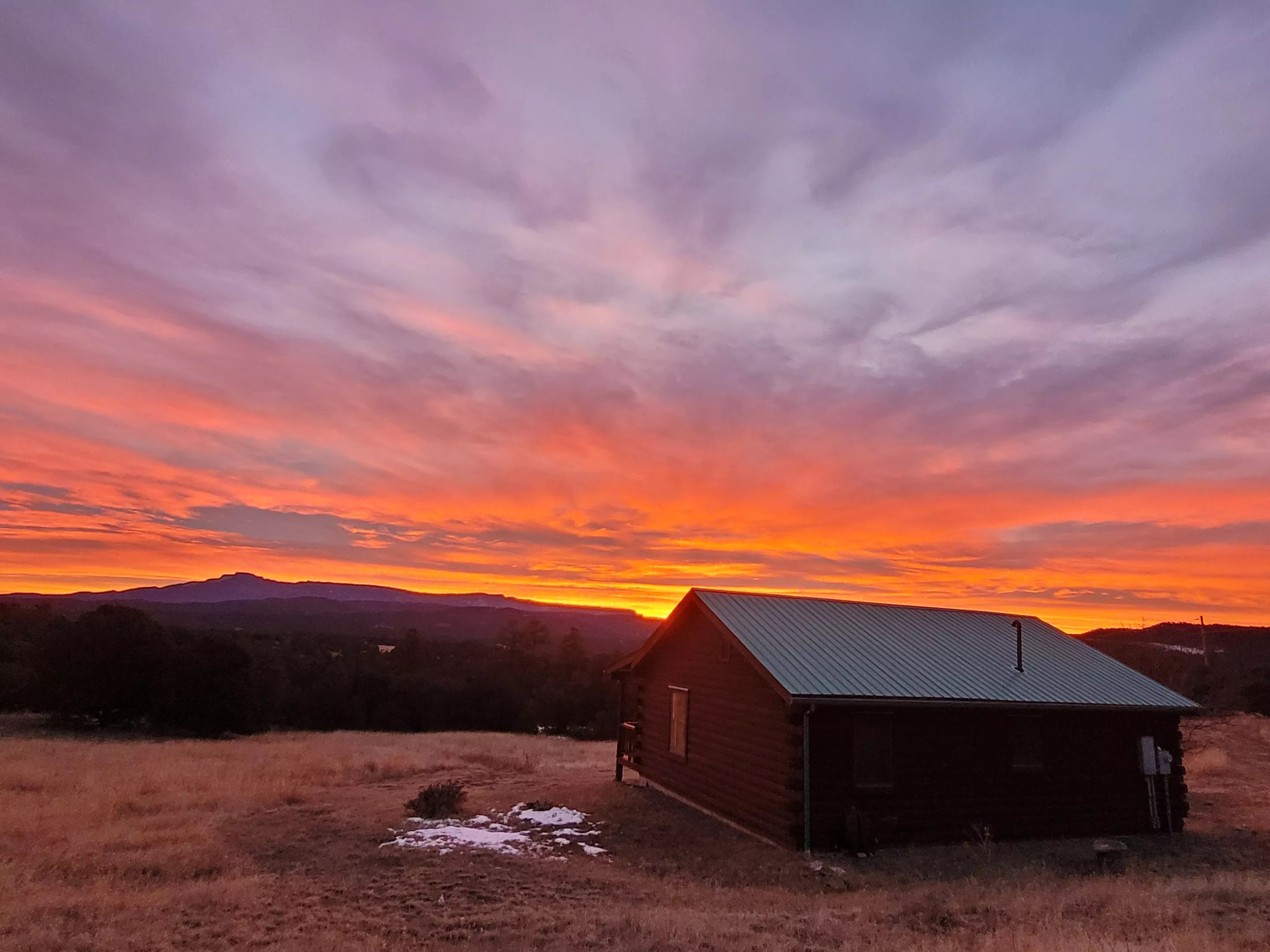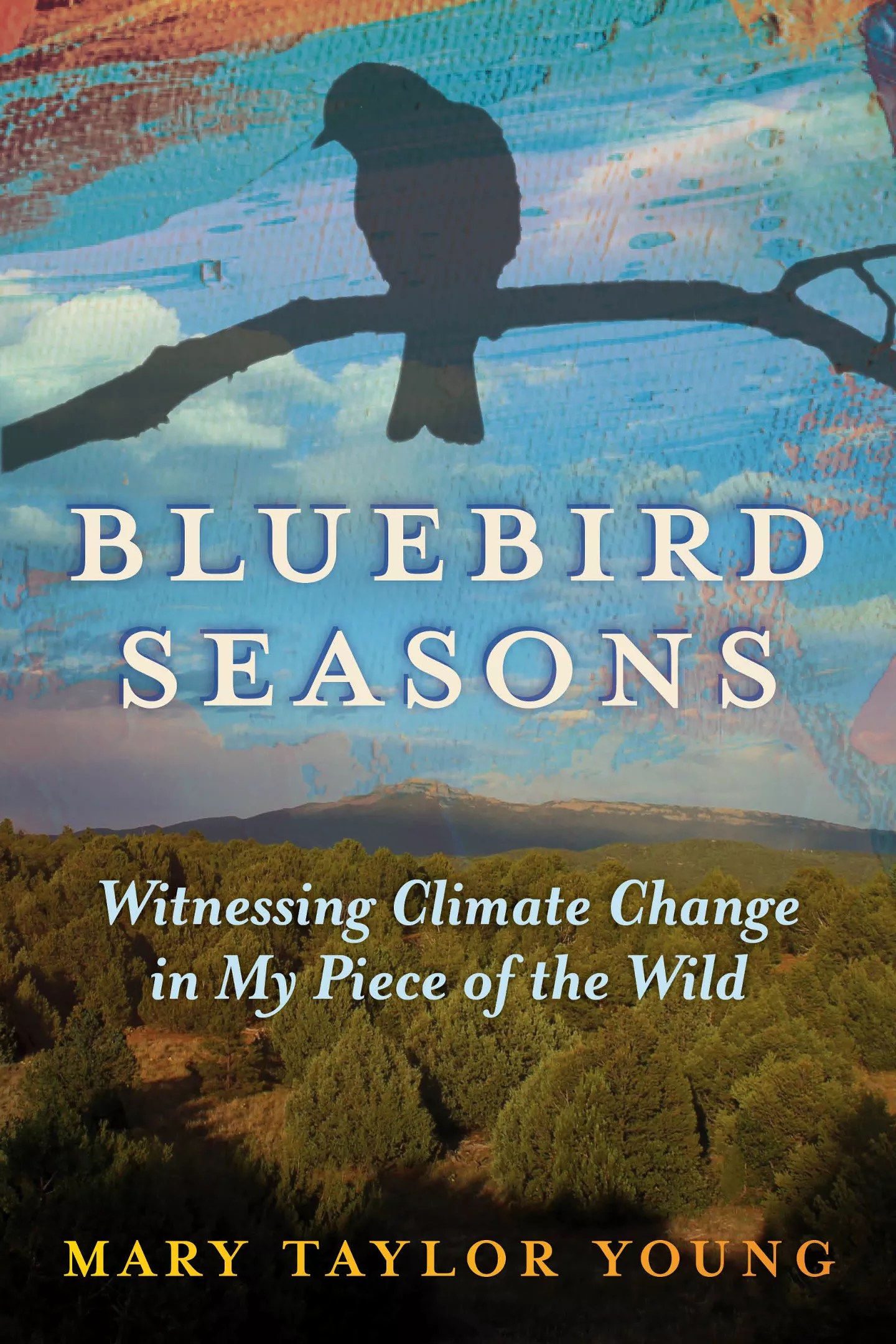
Mary Taylor Young

Audio By Carbonatix
Award-winning naturalist and author Mary Taylor Young‘s new book, Bluebird Seasons: Witnessing Climate Change in My Piece of the Wild, begins with this: “We have broken our covenant with the natural world. We have failed as stewards of the place that sustains us. This is the real cause of climate change.”
It’s a statement that goes to the heart of the book, a declaration that is both a reality check and a cultural challenge.
But just as important, the book ends with hope, borne on the wings of those titular harbinger bluebirds: “The young of the latest bluebird season are bright-eyed, undaunted, quivering with life. … Because of them, and all the hope inherent in the wondrous world around me – in youth, in people, in Earth’s resilience – I keep my eyes looking forward, toward endless bluebird seasons to come.”
These sentiments are not accidental. “Why bother to even write a book if there’s no hope?” says Young. “Bluebirds are back every season. Nature is always undaunted. It will find a way. It’s how the system is designed. I have huge faith in nature if we give it a chance. We saw it in the pandemic: dolphins in the canals of Venice, foxes crossing the street in Manhattan.”

Chicago Review Press
Young will launch Bluebird Seasons: Witnessing Climate Change in My Piece of the Wild at the Bookies bookstore with a reading and signing on Sunday, May 7, at 2:30 p.m. The event is free and open to the public, but registration is requested and is available online.
The idea for Bluebird Seasons came about, as one might expect, through an organic process. “I’d seen so much wonderful stuff down on our land in southern Colorado,” Young says. “I thought I’d write a nice little nature memoir, just about the renewal of being close to nature and seeing bluebird babies. But as I really delved into it, I realized that wasn’t the story. This was really an unintended chronicle of climate change.”
It’s a pressing issue now, but Young’s book makes it clear that climate change wasn’t considered as pressing back in 1995, when she and her husband bought 37 acres of land some twelve miles southwest of Trinidad, in the eastern foothills of the Sangre de Cristos. “I felt like my state was being bought out from under me by developers,” says Young, who back then saw a land-for-sale ad in the Rocky Mountain News. “We went out on Highway 12 and across the Purgatory River on this funny old bridge.” Young says that rickety old thing has since been replaced by something more “legit,” though assuredly with a lot less character. “We fell in love with the land,” she recalls.
They bought the land and kept their primary home in Denver’s Virginia Village while spending weekends camping at their plot down south. By 1999, they’d had enough of living out of tents, and invited friends and family to help build a cabin in the tradition of an Amish barn raising. Once that was finished, they patterned out a trail of bluebird nest boxes and observed the wildlife all around. “Chorus frogs blossoming in the pond in the evening,” reminisces Young. “Big wolf spiders emerging from holes in the ground to hunt. Lots of snake encounters and, of course, the high-profile animals like elk and bears. Lots of bears.
“We put up four nest boxes the first spring after we’d built the cabin,” Young continues. “We grew to have ten – constantly needing to be replaced, as bears knock one or two down every year. It became a centerpiece for our enjoyment of being down there. What were the birds doing? We would check the boxes, and I’d keep a list of how many eggs, how many young, how many clutches per year. It wasn’t scientific; I’m not down there enough for that. But put together over nearly 25 years, it really shows some changes. It’s citizen science.”
Young recalls the moment she first recognized that there was a marked change to the environment happening around her – that this wasn’t a temporary glitch in the earthly matrix. “It was really a change in the dominant hummingbird species,” she says. “Birds are the animal group that people are most likely to see. They’re active; mammals are much more secretive. Hummingbirds in particular, since we put out feeders and draw them to us, we can very much observe them. At first, our dominant species was the Broad-Tailed Hummingbird, which is the whistling hummer of the Colorado mountains with the magenta throat. But then there’s another species we have down there called the Black-Chinned Hummingbird. Slightly larger, has a purple gorget. It’s a southwestern, more southerly-ranging bird. Over the years, we’ve seen more and more black-chins. Just last week, I went down and put out feeders, and the first hummer to visit was a black-chin. That alone means nothing – but over the years, when I look back in my journal, when I put all the observations together, we can really see a changeover.”
Young’s observations are mirrored by the data and modeling projections for bird ranges across America. “[They] show Black-chins’ range expansion northward; broad-taileds’ northward and at higher altitude. Some of the more severe projections suggest that the broad-tailed hummingbird might disappear from Colorado altogether,” she explains.
And it’s not just birds. “Another thing we’ve noticed is the elk,” Young says. “We used to have a lot of groups come down in the fall. They’re up in the high country, feeding on lush mountain grass, and then they move downslope, where it’s relatively warmer. So winter is our elk season. One of the first years we were there, we heard this weird noise around ten at night. We went out in the darkness and saw these shapes in the moonlight and heard the elk bugling. We don’t really get that activity in the fall anymore.”
The citizen science demonstrating climate change might be the central thrust of the book, but it’s not the only topic: Young is also talking about the fabric of what it means to be a Coloradan. “It’s what people love about our state,” she says. “It’s part of our identity. Our amazing natural heritage. Our connection to wildlife.”
Which leads Young to her own hopes for what Bluebird Seasons will accomplish. “I’m telling my own climate change story,” she says. “My hope is that readers will take a look in their own backyards, their own pieces of the wild…and start to recognize change. And start to tell those stories.”
Bluebird Seasons: Witnessing Climate Change in My Piece of the Wild reading and signing, Sunday, May 7, 2:30 p.m., The Bookies, 4315 East Mississippi Avenue.